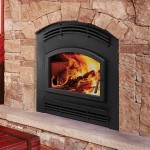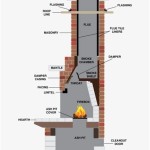How To Install A Fireplace Surround
Installing a fireplace surround can significantly enhance the aesthetic appeal of a living space, transforming a functional heat source into a focal point. The process requires careful planning, precise measurements, and adherence to safety guidelines. This article provides a comprehensive guide on how to install a fireplace surround, covering preparation, material selection, installation techniques, and essential safety considerations.
Before commencing the installation, it is crucial to determine the existing structure and its compatibility with the chosen surround. Fireplace surrounds are available in various materials, including wood, stone, tile, and metal, each offering unique visual characteristics and installation requirements. Understanding the properties of the chosen material and the specific installation instructions provided by the manufacturer is paramount.
Preparing the Fireplace Area
The initial step involves preparing the fireplace area to ensure a clean and stable surface for the surround. This begins with a thorough cleaning of the existing fireplace facade, removing any soot, dust, or debris. A wire brush can be used to scrub away stubborn residue, followed by wiping down the surface with a damp cloth. Allow the area to dry completely before proceeding.
Next, evaluate the existing structure for any imperfections, such as cracks, uneven surfaces, or loose bricks. Minor cracks can be filled with masonry repair caulk, while larger imperfections may require more extensive repairs. Ensure that the surface is level and plumb, as any irregularities can compromise the stability and appearance of the installed surround. A level and shims may be used to correct minor discrepancies.
If the existing fireplace facade is painted, it is advisable to remove the paint, especially if the new surround will be adhered directly to the surface. Paint can hinder the adhesion of adhesives, leading to a weakened bond. Use a paint scraper or chemical paint remover to strip away the paint, following the manufacturer's instructions and safety precautions. Once the paint is removed, clean the surface thoroughly and allow it to dry.
Finally, protect the surrounding area from potential damage during the installation process. Lay down drop cloths or plastic sheeting to cover the floor and nearby furniture. This will prevent debris, adhesive, or other materials from staining or damaging surfaces. Proper preparation is essential for a successful and clean installation.
Installing the Fireplace Surround
The installation of the fireplace surround depends largely on the material and design of the surround itself. Some surrounds come in multiple pieces that need to be assembled, while others are designed as a single unit. It is important to consult the manufacturer's instructions for specific guidance on assembling and installing your particular surround model.
For surrounds designed to be adhered directly to the fireplace facade, the appropriate adhesive must be chosen. Construction adhesive is typically recommended for stone, brick, or tile surrounds, while specialty adhesives may be needed for wood or metal. Apply the adhesive to the back of the surround pieces, following the manufacturer's instructions regarding application amount and pattern. Ensure that the adhesive is evenly distributed to create a strong and consistent bond.
Carefully position the surround pieces onto the prepared fireplace facade, ensuring that they are aligned correctly and level. Use shims to maintain proper spacing and alignment, especially if the surround consists of multiple pieces. Apply firm pressure to each piece to ensure proper adhesion to the surface. Excess adhesive that squeezes out from the edges can be wiped away with a damp cloth.
For surrounds that require mechanical fasteners, such as screws or nails, pre-drill pilot holes through the surround and into the fireplace facade. This will prevent the material from splitting or cracking during installation. Use appropriate fasteners for the material being fastened, and ensure that they are long enough to provide a secure hold. Countersink the fasteners to create a flush surface, and fill the holes with wood filler or caulk to conceal them.
After installing the surround, allow the adhesive or sealant to cure completely according to the manufacturer's instructions. This may take several hours or even days, depending on the product. Avoid disturbing the surround during the curing process to ensure a strong and lasting bond. Once the adhesive is cured, remove any shims or temporary supports and inspect the installation for any imperfections. Touch up any areas as needed.
Safety Considerations and Finishing Touches
Safety is paramount when installing a fireplace surround. Before beginning any work, ensure that the fireplace is cold and that all gas or electrical connections are turned off. Wear appropriate safety gear, including gloves, eye protection, and a dust mask, to protect yourself from potential hazards.
When working with power tools, such as drills or saws, follow all safety guidelines and wear appropriate hearing protection. Ensure that the tools are in good working condition and that the work area is well-ventilated. Never work with power tools while standing in water or on damp surfaces.
After the surround is installed, inspect it for any sharp edges or protruding fasteners that could pose a safety hazard. Smooth any rough edges with sandpaper or a file, and ensure that all fasteners are securely fastened and properly countersunk. Apply a sealant or caulk to any gaps or seams to prevent drafts and moisture infiltration.
Finally, consider the aesthetic integration of the surround with the existing décor of the living space. Choose a surround that complements the architectural style of the room and the color scheme of the furnishings. Consider adding decorative elements, such as mantels, hearths, or fire screens, to further enhance the visual appeal of the fireplace. A well-installed and aesthetically pleasing fireplace surround can transform a room and create a warm and inviting atmosphere.

How To Fit A Wooden Fireplace Surround

Here S How Install A New Fireplace Surround And Gas Logs

How To Fit A Fireplace Tiles Hearth Victorian

Fireplace Mantel Installation Tips How To Antique Woodworks

Home Improvement Fireplace Surround Kit Mantel Kits Diy

How To Install A Fireplace Mantel Woodworking Plans Available

How To Fit And Replace A Fire Surround Homebase

How To Install A Fireplace Mantel 14 Steps With S

How To Install A Fireplace Mantel Woodworking Plans Available

How To Install A Fireplace Mantel
Related Posts








